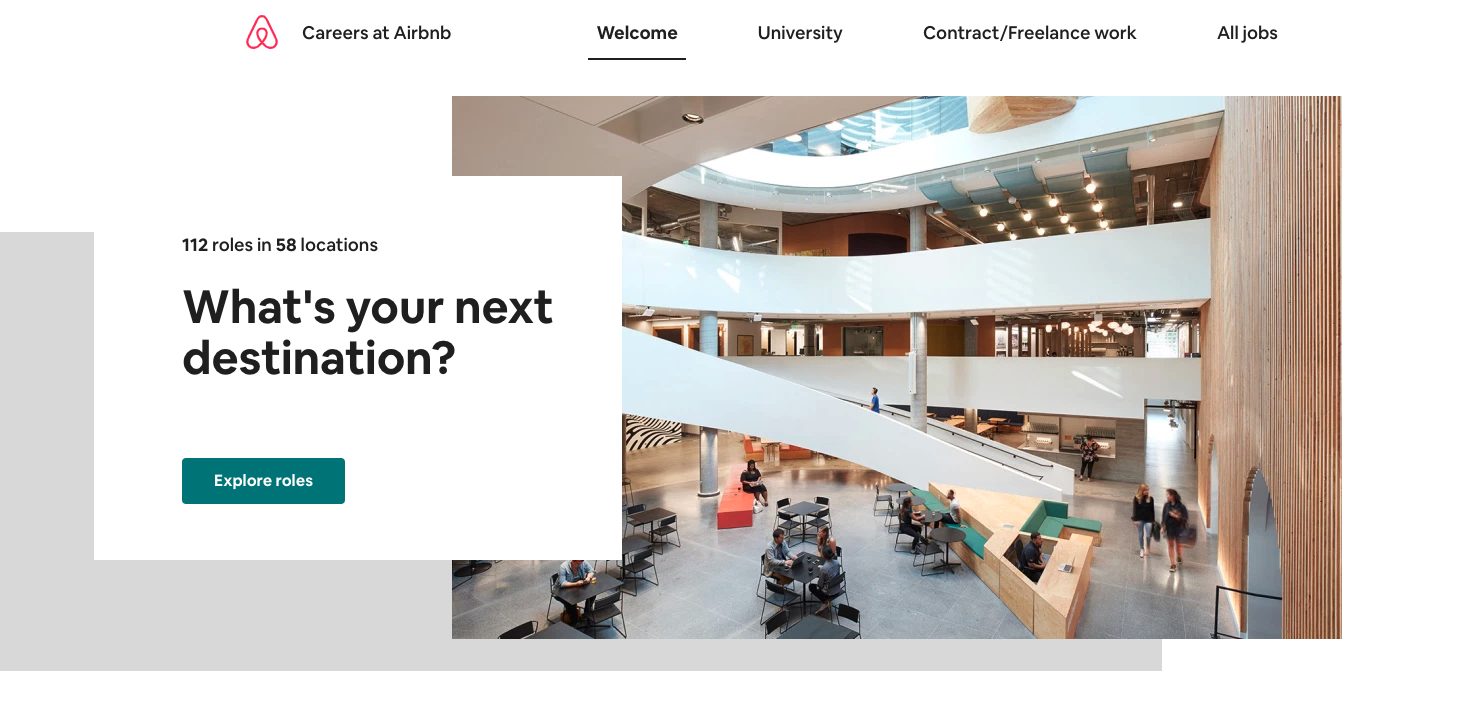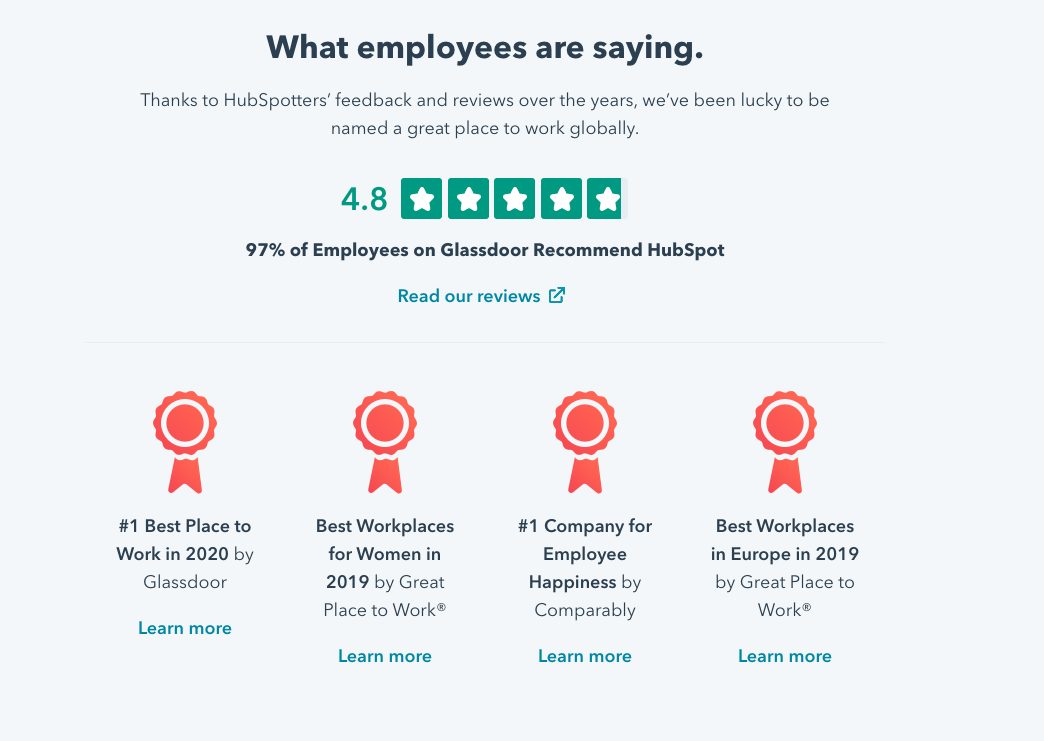A well-crafted career page has the power to win over and convert qualified candidates. However, in order for that to be the case, it requires careful oversight and to be recognized for what it truly is—a valuable tool in the recruiting tool belt.
Today there’s no shortage of creative and engaging ways for companies to attract candidates. And while it’s true that successful talent teams employ a healthy mix of recruiting tactics, few levers remain as important and relevant as the tried and true company career page.
Compared to in-depth employer branding campaigns and other forms of recruitment marketing, career pages might seem fairly straightforward and simple. But that doesn’t mean they should be neglected and unattended.
Rather, the most effective career pages require careful attention to detail and regular updating in order to remain relevant, engaging, and capable of converting curious candidates into applicants.
The Basic Principles
While there are many ways to set up a successful page, there are some core ideas that should inform how you design your page, what information to include, and how to use visual elements like videos and photographs to enhance user experience.
1. Be Consistent With Your Brand Identity
The best way to convince people to apply to your company is to tell them who you are. Your career page needs to have clear and consistent messaging that communicates the uniqueness of your corporate culture.

Airbnb is often held up as a model, in this regard. Inconsistency will turn away discerning candidates. For example, if your career page speaks of your emphasis on inclusion and diversity, make sure the images you share of your team members reflect that.
Moreover, career page content shouldn’t just convey your corporate culture, it should help build your brand.
2. Help Your Candidate Form a Connection With Your Organization
Consider how people will experience your page. The first thing they see shouldn’t be a list of open positions. Instead, think of the top of your page as a good book or short story—the opening sentences should draw people in and make them excited to read more.
This introduction shouldn’t be long—two short paragraphs is sufficient. The first should offer a “hook” that piques a candidate’s interest and offers a concise, 2-3 sentence distillation of your business’ mission. The second should pivot to the experiences of your employees, allowing individuals to begin to envision themselves as part of your team.
3. Use Media to Strengthen the Personal Connection
Videos of your work environment, testimonials from your workers, photographs of employees, etc. are important ways to further encourage candidates to imagine themselves as part of your culture and convince them to apply to open positions.
Additionally, visuals can also be used to highlight awards or recognitions bestowed upon your company. Infographics can be really useful here, as they convey important information in an attractive and easy to remember fashion. Hubspot offers a good model for this strategy.

You can also utilize your greatest resource—your employees. Use your team as brand ambassadors and build your careers site around the photos and content they share, like Earl’s Kitchen & Bar has done.
4. Job Postings Should Sell the Company
An effective career site needs to translate visitors into applicants. Job descriptions should enhance the interest and energy you’ve built elsewhere in the page. Boring job descriptions squander interest. Effective job descriptions give readers a clear sense of the role and excites them to apply for it. So keep postings informative, engaging, and concise.
SEO Best Practices
Maximizing SEO on a career page is a complex process with many variables. It starts with the fact that most candidates begin their job search with Google, which sees more than 150 million monthly job searches. At minimum, companies should make sure their job postings include all of the requisite information to guarantee Google for Jobs will “find” your career page. That information includes:
- Name of your organization
- Title of the job
- Job description—including responsibilities, qualifications, educational requirements, etc.
- Job posting date
- Job location information, including full address
- Job posting expiration date
But moving your job search to the first page of the Google search list takes work. So in addition to generating content to boost your company rating in Google’s algorithm, we also recommend utilizing keyword research and on-page SEO optimization. As we cover more here, Google’s Keyword Planner is a great resource to help identify the most popular searches for jobs within an industry.

There are three types of Careers and Jobs landing pages that generate the best organic traffic. Implement your keyword research to create these landing pages:
- Careers home page
- Career/job category pages
- Individual jobs pages
- Each of these pages should be contained within the same subfolder:
- ‘site’.com/careers
- ‘site’.com/careers/job-category
- ‘site’.com/careers/job-posting
It’s fine if your company website uses subdomains like careers.’site’.com, but subfolders are the SEO-preferred method for category page building.
After setting up these landing pages, it’s important to optimize each page for general job searches. The primary method for job landing page optimization is to implement current structured data, also known as Schema for job postings. Thankfully, Google has published extensive guidelines and Schema testing tools, which are available here and here.
Bottom Line
Your career page is a focal point of talent recruitment and brand construction. A sound, well-optimized page will help you attract job seekers who are a great match for your company and convert them into valuable applicants in your candidate pipeline.
Need a hand sprucing up your company’s career page? Luckily for you, we’re in the business of taking career pages from bland to bold. Let’s talk.






